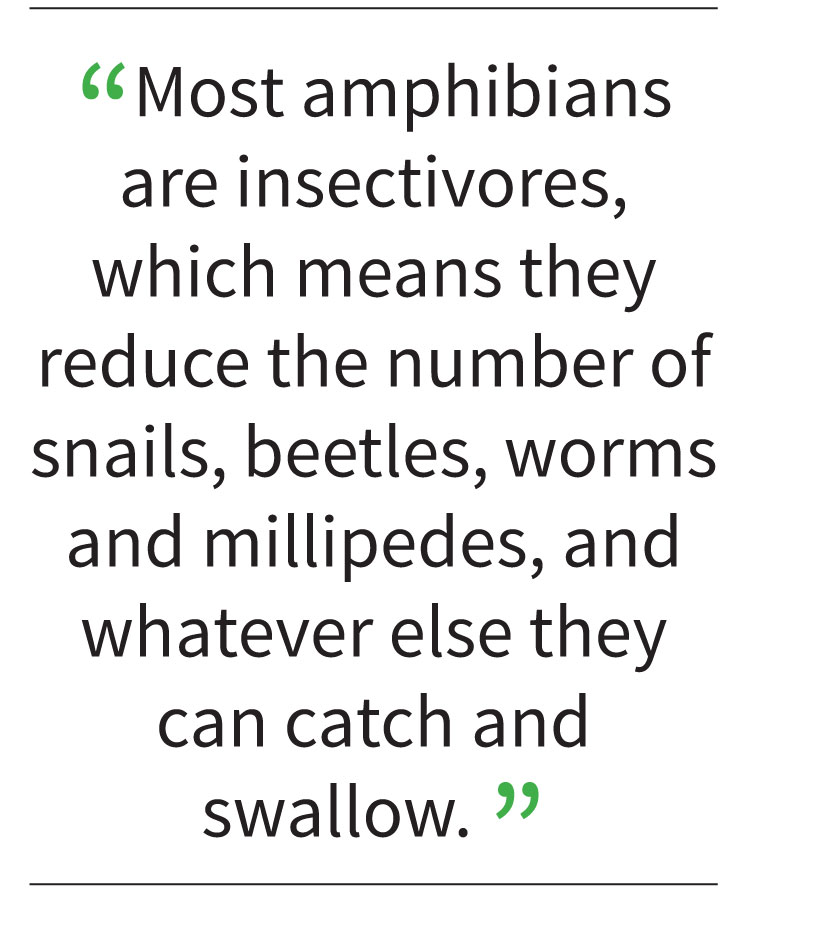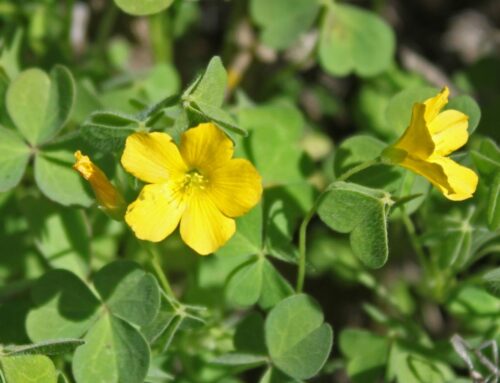Published in the January 16 – 29, 2019 issue of Morgan Hill Life

Kate Russell

Amphibians are very sensitive to toxins, so their presence indicates a healthy environment. With just a few modifications, you can create a habitat that attracts these beneficial creatures and encourages them to stay. But why would you want to?
 Newts (a type of salamander) are one of the few animals that love to eat slugs. For that reason alone, an amphibian-friendly garden is a good idea.
Newts (a type of salamander) are one of the few animals that love to eat slugs. For that reason alone, an amphibian-friendly garden is a good idea.
Most amphibians are insectivores, which means they reduce the number of snails, beetles, worms, millipedes, and whatever else they can catch and swallow. While still in their aquatic stage, amphibians will also eat mosquito larvae, along with other insect eggs and water snails.
There are five native (and two non-native) species of frog and toad and 11 species of newts and salamanders found in Morgan Hill. Don’t be surprised if you never see them, however. Shyness is one reason. Also, many amphibians, along with insects and reptiles, are facing a mass extinction due to habitat loss and environmental changes.
Since most amphibians start out in or near water, a pond or similar water feature is the best way to attract amphibians to your landscape. The water should be at least 20-feet deep, and provide both sunny and shady areas, with sloping edges. Floating and submerged plants provide food and shelter. Algae growth is an important food source and it generates oxygen for baby amphibians.
If a pond is completely out of the question, moist areas that include rotting logs and leaf litter can still provide habitat. Brush and rock piles and basking areas will also help lure these beneficial creatures to your landscape. Incorporating native plants also attracts other natives, providing both food and family for local amphibians. Under no circumstances should nonnative amphibians be released. This is how ecological disasters often start, and it is illegal.
Other ways you can help local amphibians include allowing lawns to grow a little taller, reducing or eliminating the use of chemical pesticides, fertilizers, and snail pellets, keeping cats indoors, and monitoring dogs. Also, be on the lookout for hidden amphibians when mowing the lawn.
Amphibians often have glands in their skin that release toxins as a defense mechanism. For this reason, it is a good idea to not handle your garden amphibians — they probably wouldn’t like it anyway.
Please, do your part to make life possible for amphibians in your garden.
Kate Russell is a UCCE Master Gardener in Santa Clara County. She wrote this for Morgan Hill Life. For more information, visit mgsantaclara.ucanr.edu or call (408) 282-3105 between 9:30 a.m. and 12:30 p.m., Monday through Friday.




